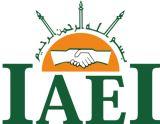ANALISIS POTENSI AGROWISATADI KABUPATEN KARO
Abstract
The potential of Agrotourism in Karo Regency is very well developed for the future. Tourism visiting Karo Regency from year to year continues to increase because Karo Regency is a Regency known for its types of plants and tourism. The geographical area which is located in a mountainous/highland area makes Karo Regency has the potential to become a tourism destination. The coolness of nature is an aspect that triggers tourist interest to visit tourist areas in Karo Regency. The tourism targets in Karo Regency are natural tourism objects, cultural tourism, historical heritage, agro-tourism, and playgrounds. This research aims to identify the potential for developing agro-tourism in Karo District and identify strategies regarding efforts to develop agro-tourism in Karo District. This research uses a descriptive qualitative approach and SWOT analysis. Based on the results of the internal analysis of Agrotourism in Karo Regency, there are three strengths including strategic location, having a beautiful panorama and the community giving a good response to Agrotourism in Karo Regency. The weakness is the lack of technology that is still used in Agrotourism in Karo Regency itself is still simple or traditional, there are limitations on facilities and facilities in Agrotourism gardens in Karo Regency, and promotions that have not been aggressive and intensive. Based on the results of the external environment of Agrotourism in Karo Regency, opportunities are obtained, namely technology that is growing, the number of visitors during the holiday period is increasing, people's lifestyles (back tone). The results of the SWOT analysis of Agrotourism Potential in Karo Regency that the results in the IFAS and EFAS Matrix tables of Agrotourism Potential in Karo Regency are in cell I, namely the situation where Agrotourism in Karo Regency is located in Growth, namely Concentration on Vertical Integration, namely the strategy of using Backward integration (shifting the role of suppliers) ) or Forward Integration (switching the role of distributor).
Full Text:
PDFReferences
Arifin, Hadi Susillo, dkk. 2009. Potensi Agrowisata di Perdesaan. Bogor: BiroPerencanaan Pertanian
Harahap, Isnaini. 2018. Ekonomi Pembangunan Pendekatan Transdisipliner. Medan: Perdana Publising
Rangkuti,Freedy. 2003 Analisis SWOT Teknik Membedah Kasus Bisnis, Jakarta: Gramedia Pustaka Utama
Bawono, Icuk Rangga, dkk. 2009. Potensi Desa Di Indonesia. Jakarta: PT Grasindo
B. Milles A Matthew dan Michael Huberman Terj. Tjetjep Rohendi Rohdi. 1992.Analisis Data Kualitatif. Jakarta : UI Press
Darwanto, Herry.2004. Tata Cara Perencanaan Pengembangan Kawasan Untuk Percepatan Pembangunan Daerah. Direktur Pengembangan Kawasan Khusus dan Tertinggal : Bappenas
Dinar, Muhamad. 2018. Pengantar Ekonomi Teori dan Aplikasi. Makassar :CV. Nur Lina
Djakfar, Muhammad. 2017. Pariwisata Halal Prespektif Multidimensi. Malang: UIN Maliki Press
Imsar, Analisis Produksi Dan Pendapatan Usaha Tani Kopi Gayo (Arabika) Kabupaten Benar Meriah (Sutudi Kasus: Desa Pantan Tengah Kecmatan Permata). Medan, 2018 http://repository.uinsu.ac.id/5091/
Bangun, Nur Cahaya. 2003. “Strategi Pengembangan Agrowisata Sebagai Pariwisata Alternatif Di Desa Barusjahe Kabupaten Karo” Medan: Universitas Sumatera Utara
Puspitasari, selvia. 2010. Kajian Potensi Agro di Kabupaten Bandung Berdasarkan Aspek Permintaan dan Sediaan. Bandung : Insitut Teknologi Bandung
DOI: http://dx.doi.org/10.30821/se.v7i2.10621
Refbacks
- There are currently no refbacks.













